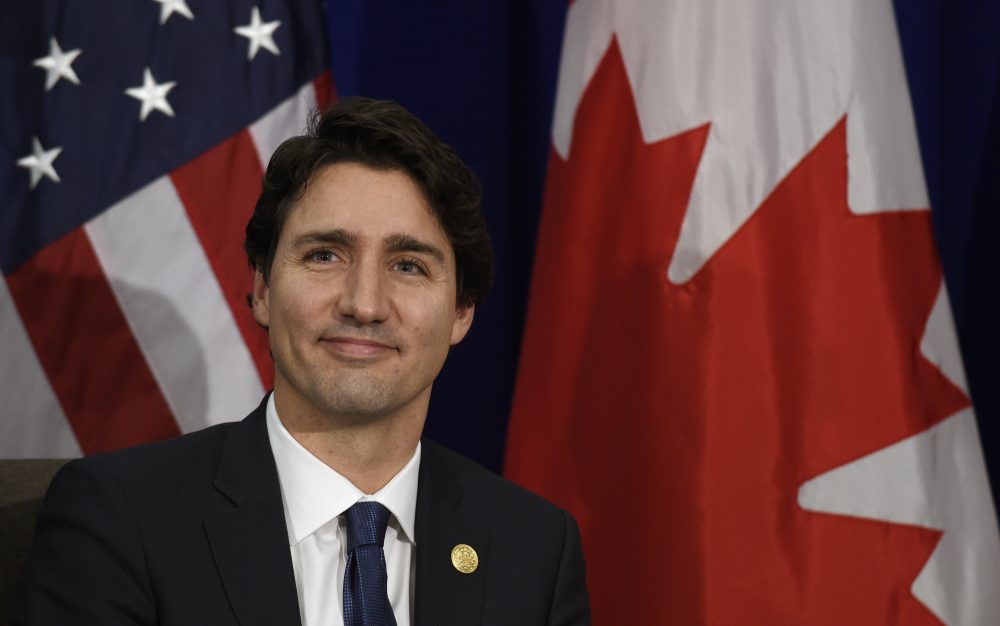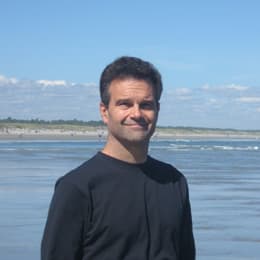Advertisement
Canada First: A Humane And Hard-Nosed Immigration Policy For Trump

COMMENTARY
Canadians are famously nice.
In the grand scheme, social programs like medical care for all are the envy of liberals south of the border. On an individual level, big-hearted Canadians gave the United States a much-needed social media pick-me-up during our toxic presidential election. Vacationers from the States even detect a kindlier temperament in the country’s border guards.
So here’s a man-bites-dog newsflash: These nice people can teach our incoming president how to make immigration policy more hard-nosed, while keeping it humane.
Of all the combustible rhetoric Donald Trump offered during the campaign, his talk about newcomers was the hottest. As he prepares to place his hand on the inaugural Bible, a book that commands welcoming strangers and immigrants, perhaps he can be convinced to drop the uglier aspects of his thinking by gazing north. There he’ll find an immigration approach that heeds the biblical edict while embracing a philosophy Trump might describe as Canada First.
Canada puts more emphasis than we on admitting newcomers it deems capable of contributing economically to the nation...
Canada puts more emphasis than we on admitting newcomers it deems capable of contributing economically to the nation, Jonathan Tepperman writes in his new book, "The Fix," a collection of case studies on how various nations successfully manage the globe’s most bedeviling problems. (Tepperman, managing editor of Foreign Affairs magazine, grew up in Canada.) The United States, by contrast, gives first place in line to people with family already here. That, Tepperman says, is “a well-intentioned but extremely irrational approach that, in effect, lets an arbitrary factor — whether or not an applicant’s relatives had the cunning or dumb luck to get into the country before them — shape the nation’s immigrant population.”
Did leaders in the Great White North leave their fabled niceness at the door when they demanded that immigrants show good capitalist potential? On the contrary, this policy marked the repudiation of a shameful past, and a recognition of necessity. For a century before the 1960s, Canada embraced harsh, ethnic-edged immigration (so did we). It eagerly recruited white, northern Europeans, grudgingly accepted other Europeans when its economy demanded workers, and banned anyone else, Asians in particular.
Advertisement
This regime changed for reasons practical, not moral. Ottawa found itself unable to plug a labor shortage, as Europeans, their continent rebounding from the Second World War’s wreckage, increasingly stayed put. So in 1962, Canada became the first country on earth to drop ethnic criteria from its entry policy, Tepperman writes; henceforth, aspiring immigrants would be judged “on their educational, professional, and technical qualifications.”
It took several years for reality to match rhetoric, but once it did, Canada became a more racially diverse society. As has happened here, many Canadians initially opposed letting non-whites in. Then in 1971, Prime Minister Pierre Trudeau, declaring that “cultural pluralism is the very essence of Canadian identity,” created a Multiculturalism Ministry and Human Rights Commission to combat discrimination.
These changes didn’t create God’s kingdom up north, to be sure. Tepperman notes that Canada’s native peoples were “largely left out of the conversation.” But married to an immigration system premised on economic contributions, multiculturalism became more acceptable as Canada reaped benefits. According to "The Fix," it boasts the best-educated immigrant citizens of any nation, half of whom have college degrees, versus 27 percent in the U.S., and “economic-class immigrants consume less in welfare spending than do native-born Canadians.”
Today, Trudeau’s successor and son, Justin, greets Syrian arrivals, of whom Canada accepts more than most nations, with winter coats and the assurance, “You’re safe at home now.”
A policy that floods the nation with hardworking talent from abroad is something the nationalist Trump should be able to support.
A policy that floods the nation with hardworking talent from abroad is something the nationalist Trump should be able to support. In particular, admitting Muslims who could add to our economy (with vetting, already being done, to guard against possible radicals) might persuade the new president to drop his ill-advised ban on all followers of Islam. As with so much else, however, it's unclear where, precisely, Trump stands on criteria for entering the country. During the campaign, he had good and bad things to say about H-1B visas, which bring skilled technology workers to the U.S.; his attorney general-designate, Jeff Sessions, has damned that program as stealing Americans’ jobs.
Some doubt we could replicate the scale of Canada’s welcome mat for immigrants; it is, after all, the world’s second largest nation area-wise but is barely sprinkled with people, leaving lots of elbow room, geographically and job-wise, for newcomers. But the point isn’t so much numbers of immigrants as it is the criteria for admitting them, Canada shows that a policy weighted more towards economic-based entrance, with some but less emphasis on reuniting family than the U.S. employs, not only could add to our prosperity but potentially pacify xenophobic Americans.
And, with luck, the 45th president.
